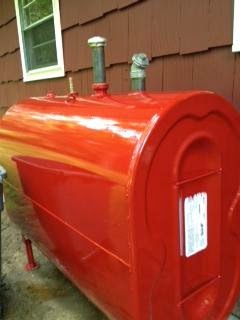Many homes and businesses have oil heat that require large
tanks for storage. These tanks can either be found above- or below-ground. While
either system is certainly efficient, we have found that above ground tanks pose
significant advantages. Oil tanks need to be monitored on a regular basis, and
when they are underground, it’s extremely difficult to keep an eye on them. Homes
and businesses that have underground tanks aren’t out of luck, however – they
can be removed and placed above-ground, which is where we come in!
At Barrier Contracting, we provide underground oil tank removal for homes and businesses. We bring our excavator machine to your
location and remove the tank safely and efficiently. Oil tank removal by hand can
be extremely dangerous if not done properly. Our specialists are experienced
and knowledgeable about the industry’s best practices, and provide excellent
service every time. Trust Barrier Contracting for all your needs, from fuel oil
storage tank installation to oil tank removal.
The cost to remove underground storage tanks depends on a
variety of factors and must be assessed on a case-by-case basis. Our cost-effective
solutions are perfect for all of our new and existing clients. Don’t be afraid
of any hidden costs. We stand by our pricing and break down each expense to help
you understand exactly what you’re paying for. To learn more about our services
and get a quote, contact us today by phone or email at (914) 760-2089, (914)
760-2090 or at waynejr@barrier.com.



